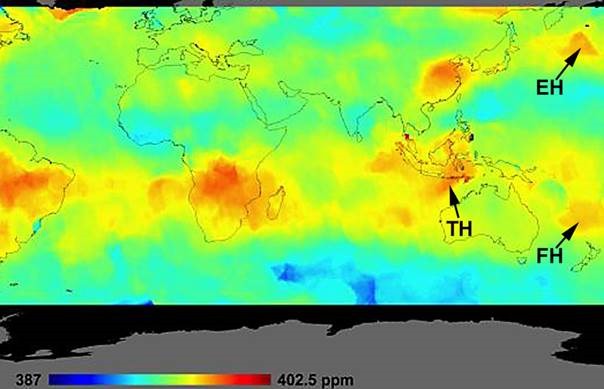Guest essay by Martin Hovland, Geophysiscist and Professor Emeritus, Center for Geobiology, University of Bergen, Norway
The newly released satellite OCO2-data indicates that there is CO2 input in tectonically active oceanic areas. This becomes evident by pairing seafloor topography and tectonic data with the recently published OCO2-results. Thus, in the released OCO2 dataset, showing the average atmospheric concentration of CO2 over a period of about 6 weeks late in 2014, there are three curious, relatively week, but distinct CO2-hotspots over oceanic regions:
1) The Timor CO2-hotspot
2) the Fiji CO2-hotspot, and
3) the Emperor CO2-hotspot, see Fig. 1.
 Fig. 1 Portions of the initial published OCO2 data, showing the locations of the three CO2-hotspots discussed herein. TH=Timor CO2-hotspot; FH=Fiji CO2-hotspot; EH=Emperor CO2-hotspot. They are all apparently associated with tectonically active processes on the underlying seafloor.
Fig. 1 Portions of the initial published OCO2 data, showing the locations of the three CO2-hotspots discussed herein. TH=Timor CO2-hotspot; FH=Fiji CO2-hotspot; EH=Emperor CO2-hotspot. They are all apparently associated with tectonically active processes on the underlying seafloor.
View original post 482 more words